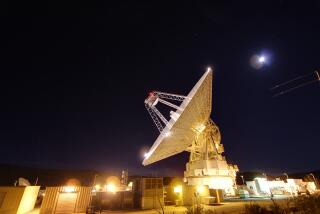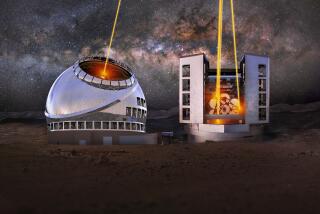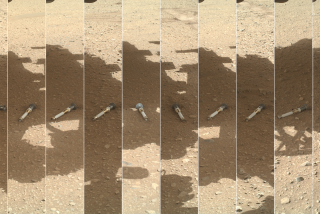Should NASA keep flying flagship missions? A new report weighs in
NASA‚Äôs biggest, most ambitious missions may cost billions ‚ÄĒ but they‚Äôre well worth it, according to a report published Thursday.
The findings, released by the National Academies of Sciences, Engineering and Medicine, may help settle the question of whether the agency should be investing in missions of this size.
Before he retired last year, John Grunsfeld, then associate administrator for NASA‚Äôs Science Mission Directorate, commissioned the outside report. The goal: to assess the role of NASA‚Äôs large strategic missions ‚ÄĒ projects like the James Webb Space Telescope, set to launch in 2018, or the Mars Science Laboratory rover (a.k.a. Curiosity), which has been exploring the Red Planet since 2012.
‚ÄúThese missions typically are billion-dollar class missions, the most costly, the most complex, but also the most capable of the fleet of scientific spacecraft developed by NASA,‚ÄĚ the report‚Äôs authors wrote. ‚ÄúThey produce tremendous science returns and are a foundation of the global reputation of NASA and the U.S. space program.‚ÄĚ
In recent years, some of these large missions had come under scrutiny. The Webb telescope, for example, had been criticized for delays and cost increases. Even Curiosity, considered a very successful flagship mission, was critiqued for being two years late and over budget. And in 2013, former Administrator Charles Bolden reportedly went so far as to tell scientists that they had to ‚Äústop thinking about ‚Ķ flagship missions.‚ÄĚ
The lingering worry was whether such large strategic missions were worth the time, money and effort, and in the process taking resources away from smaller but just as worthy missions.
‚ÄúThere always is this question of balance, and ‚Ķ a question of what exactly does balance mean,‚ÄĚ Ralph L. McNutt Jr., a space plasma physicist at Johns Hopkins University Applied Physics Laboratory, said in reference to the Webb telescope. McNutt co-chaired the committee that wrote the new report.
The report analyzed missions from each of the four divisions in NASA’s Science Mission Directorate: astrophysics, Earth science, heliophysics and planetary science.
The results? When it comes to planning and budgeting large-scale, flagship missions, NASA’s doing pretty well.
‚ÄúWe reaffirmed that, yes, these large missions are important,‚ÄĚ said committee co-chair Kathryn Thornton, a former NASA astronaut and an aerospace engineer at the University of Virginia. ‚ÄúThere are some science questions you cannot answer any other way.‚ÄĚ
In fact, in the last few years NASA‚Äôs Science Mission Directorate has actually gotten better at making accurate cost estimates early in the game, the report authors said. It has also begun taking better cues from decadal surveys ‚ÄĒ reports by the national academies that lay out the upcoming scientific priorities for each of those four divisions.
In all divisions, balancing those large missions with a healthy number of small and medium missions is key, the scientists added.
‚ÄúAs the report says, not all strategic missions are large,‚ÄĚ said Victoria Hamilton, a planetary scientist at the Southwest Research Institute who served on the committee that wrote the report. ‚ÄúThere are strategic scientific objectives that can be met with spacecraft that would fall in the small or medium classes.‚ÄĚ
Follow @aminawrite on Twitter for more science news and ‚Äúlike‚ÄĚ Los Angeles Times Science & Health on Facebook.
MORE IN SCIENCE
Nighttime forecast for Mars: Bursts of rapidly falling snow
Three years of preparation, two minutes of totality. For this eclipse scientist, it’s all worth it
What should you say to a climate change skeptic?







